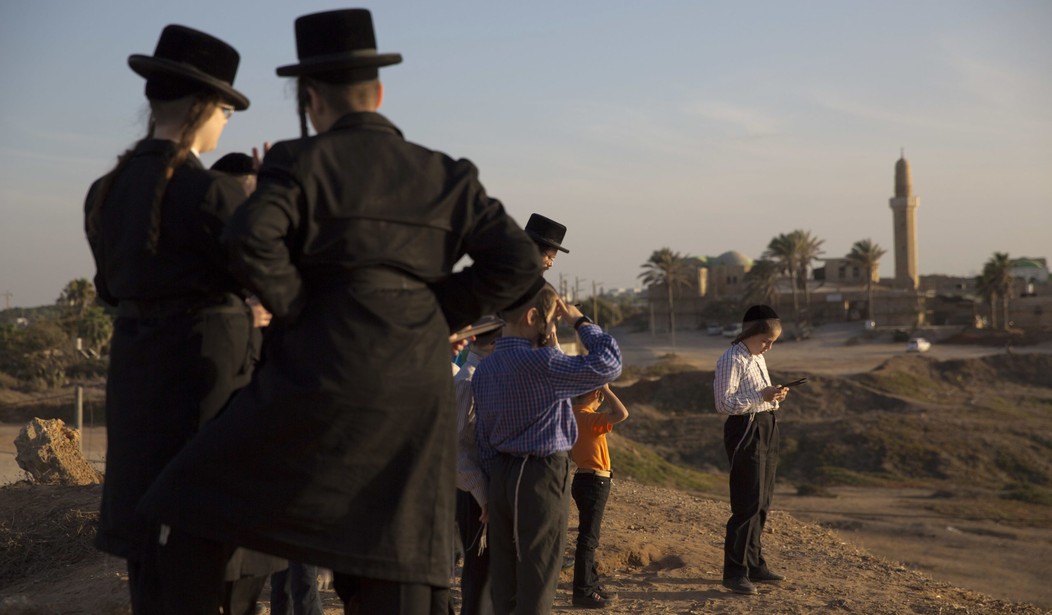The question:
Can you go over the different clothing orthodox (Haredi) Jews wear and why? — A.R.
The answer:
The Torah makes certain requirements in terms of the way people are to be attired; beyond these requirements, certain other things have become customary depending upon the community one is identified with.
The fundamental requirement is that of modesty, which may be discerned from Genesis II, 7ff, when the first man and woman, deprived of their original innocence, realized that they were naked and made the first clothing.
The second requirement is stated in Deuteronomy XXII, 5:
Lo’ yihye chëli gever ‘al isha vëlo’ yilbash gever simlath isha, ki to‘avath HaShem Elo-hecha kol ‘osé élle.
A male article should not be on a woman, nor should a male wear the dress of a woman, for an abomination of Ha-Shem your G-d is anyone who does this.
In the modern world, this is usually interpreted to mean that women are expected to wear dresses and skirts, and men slacks and shirts. When the requirement of modesty is applied to this, the result is a tendency toward longer skirts and longer sleeves, though standards vary.
The Talmud (cf. e.g. Shabbath 156b and Qiddushin 31a) generally speaks approvingly of covering one’s head, especially during prayer, while engaged in Torah study, or while performing some specific act such as making a blessing. This has led to the general custom of wearing what is called in Hebrew a kippa, also known by the Yiddish terms koppel and yarmulka.
Although early codified halacha, strictly speaking, requires this head covering only during the occasions mentioned (cf. e.g. Rambam, Hilchoth Tëfilla V, 5), the Shulchan Aruch, Orach Chaim II, 6 recommends that one should not walk a distance of four ammoth with one’s head uncovered, and the Mishna Bërura (ibid., notes 9 and 10) rules that it has become the custom to cover one’s head constantly, even when standing or sitting still.
There are many reasons adduced for this custom, such as: it shows respect or submission to G-d; it is a simple sign of the separation between the Jewish people and the rest of the world; it is affirmative affiliation as a religiously observant Jew (this from a responsum of Rabbi ‘Ovadya Yoséf, late Sefardic chief rabbi of Israel).
Kippoth come in numerous styles, depending upon the community one identifies with. Generally speaking, the crocheted versions tend to be worn by religious Zionists or those who consider themselves “modern orthodox”, while black cloth kippoth tend to be favored by those Jews adhering to the traditions of what are generally known as “Lithuanian” yëshivoth, and black velvet ones by adherents of various chasidic groups and religious Sefardim. There are nuances with all of these, but this covers the general run.
Orthodox Jewish married women generally also cover their hair, often wearing elaborate wigs called sheitelach, and on less formal occasions, a kerchief or other head covering.
It has also become customary among the most seriously religious segment of the Jewish world, which for want of a better term we can term chareidim, to wear hats and jackets while at prayer. For the Lithuanian yëshiva types, as well as adherents of the Lubavitcher chasidic group, these are generally ordinary fedoras. Chasidim wear various unique styles of headgear; on festive occasions, such as the sabbath, holidays and such family celebrations as weddings, many chasidic groups wear fur hats. These are of two general types, the most widespread being the shtreimel, which is basically constructed of a black velvet kippa with a ring of fur around it, and a spodik, which is more conical, and is generally worn by chasidim whose origin lies in that part of Poland which had been assigned to the Russian Empire at the Congress of Vienna in 1815. Most recently, some shtreimelach and spodikes are made of synthetic materials.
The origin of the custom is obscure, but the shtreimel is fraught with symbolism. Attributed to the 18th century chasidic authority Rabbi Pinchas Koretzer, for example, is the statement that the very word shabbath is an acronym for shtreimel bimqom tëfillin, “shtreimel instead of tëfillin,” since the phylacteries worn during the morning prayers are customarily not worn on the sabbath or holidays. The number of components used to make the various types of shtreimelach equal the thirteen attributes of divine Mercy (cf. Exodus XXXIV, 6), the Hebrew word for life (chai), or the numerical equivalent of the Tetragrammaton, depending upon the intentions of the shtreimel-maker.
The same Jews who wear shtreimelach also generally wear long coats, usually black in color, called bekeshes. These, too, stem from eastern Europe. Many Jews of Jerusalem and environs wear white or colorful versions, which are usually called caftans. Important rabbis of the Lithuanian yëshiva world and Lubavitcher chasidim often wear a somewhat plainer version called a kapota.
All male Orthodox Jews wear a four-cornered garment called an arba kanfoth or talltih qatan with intricately tied cords at the corners called tzitzith. This is in line with the biblical commandment in Numbers XV, 38ff. The various knots and strands of the tzitzith, which add up to the number 613, are intended to remind the wearer constantly of the obligation to fulfill the 613 mitzvoth, or commandments, of the written Torah.
That, in brief, is the sartorial world of the Orthodox Jew.









Join the conversation as a VIP Member